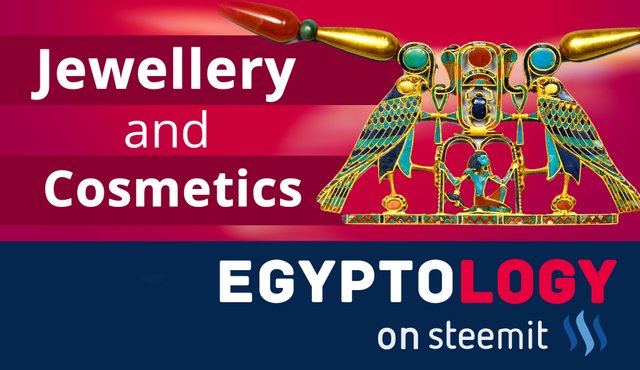
This time I got inspired by @pawos who kindly asked me to write a post about jewellery in Ancient Egypt. And indeed, this is a very interesting topic that’s worth a closer look. But if you are a regular reader of my blog, you will probably have noticed that I provide you mostly with the information you won’t see everywhere. So I hope this posting has the same effect on you. You will get some fascinating new insights into the bling-bling of a long lost culture. ;)
Function of Jewellery and Cosmetics
In the beginning, I would like to tell you some facts about objects that we would consider just to be decorative when we look at them. And of course, the Ancient Egyptians used a lot of pure gold and other precious metals (silver, electrum) and nice gemstones. But remember: the people of this culture never did anything that had not a deeper meaning! So bracelets, rings and necklaces were used also as:
- amulets for safety and other magical purposes
- for rejuvenation
- for status and power.
And regarding these functions, we can see specially shaped objects in certain contexts. Let me explain this as follows.
Amulets
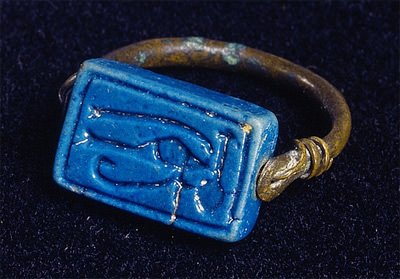 Fig. 1: Amulet ring with the Udjat Eye
Fig. 1: Amulet ring with the Udjat EyeIn one of my previous articles about mummification, I already told you that the Ancient Egyptians replaced the heart of a deceased with a gemstone shaped like a heart-scarab. This was designed to work as an amulet: the idea of safety on the journey to the afterlife was put into this stone. It was literally „loaded“ with a purpose in a magical way. Those scarabs or other amulets had inscriptions, that reinforced this special meaning. Beside this, Egyptologists found tiny capsules that were worn with a rope as a necklace. And this often rich engraved capsules contained very small folded papyri with spells for the healing of a major illness or to support a deep wish (for example a woman to get pregnant soon). In Egypt medical treatment with substances was almost everytime combined with magic. Amulets dedicated to a person worked as a vessel of wishes for well-being or to cover a ritual to transform a willing into existence. This could be, of course, also abused: there were found even magical spells to making someone fall in love with the amulet-owner by „removing“ the actual partner from its place.
1
Rejuvenation
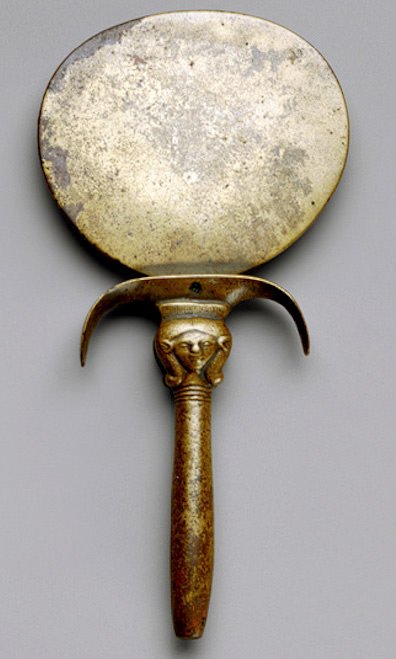 Fig. 2: Mirror with Hathor Cow horns
Fig. 2: Mirror with Hathor Cow hornsYou might not be surprised that the Ancient Egyptians just like most of us today were heading for „eternal youth“. But there was a huge difference. They accepted their life here on earth to have a natural ending. Becoming old was appreciated. The reason why they always depicted themselves in tombs and elsewhere with a fresh appearance and at their „best age“ was not that they didn’t want to look old. It was a – again - a magical way of thinking: they wanted to keep their youth in the afterlife. They acted as if they had to „freeze“ this condition in their images. And so also the jewellery they used was a pure expression of this. In many tombs, we found complete sets of jewellery together with boxes that seemed to be used for carrying cosmetic equipment. Some of the most intriguing artefacts are mirrors. They can not be compared with mirrors we use today. They were mainly made of polished copper, decorated with symbolic cow horns (of the fertility cow Goddess Hathor) and other ornamentation.
2
Eyeshadow Makeup
 Fig. 3: Baby with Kajal
Fig. 3: Baby with KajalThe unique way of applying eyeshadow is something the Ancient Egyptians are also famous for. Everyone knows the dark „eyeliner“ of the Egyptians through the typical pictures on tomb walls. This was – at least in the beginning – not an expression of beauty. The people of the desert put a mix of grease and galena (plumb, lead sulphide) on special makeup palettes, and used this paste to swipe it with a brush through the closed eyes. The main purpose of this was to keep flies away of the eyes and avoid blinding by the sun. The rare materials for this treatment came from Beduines and from Assuan and the Red Sea.
3 Even today when a baby is born, many eastern cultures still cultivate this tradition as a ritual to fight the „evil eye“, which is discussed very controversial because of health issues. Although scientists found out, that the Ancient Egyptian eye makeup could have had an antibacterial effect.
4
Status and Power
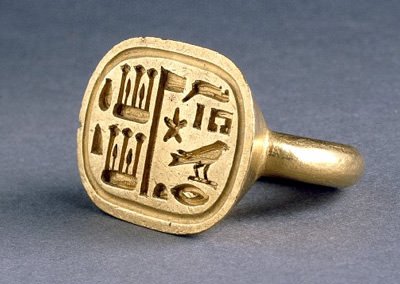 Fig. 4: Seal ring of Sheshonq
Fig. 4: Seal ring of SheshonqJewellery was not exclusively worn by women, but also by men, especially in high positions. Officials that worked as administrators, for example, to control the distribution of food for the people, had special seal rings with the name of the Pharao. Here we can see a hierarchical structure of the state: the Pharao as the highest person could dedicated responsibilities to his confidants. We know this not only from the findings of such seal rings in the tombs of this officials but also in their titles: sometimes they call themselves smr wꜤ.ty, wich means „the only (close) friend“ of the King.
5
Colors of Gemstones
The Ancient Egyptians had special terms in their language to describe colours. Interestingly these terms are often the same that they used to express objects or conditions. I want to give a few examples: the term „wꜢḏ“ (speak: wɑːd͡ʒ), depicted by the hieroglyph 𓇅 (a papyrus stem), was used for „green“, „fresh“, „thrive and flourish“, „to be happy“ - and for the gemstone malachite!6 Another example is the term ḫsbḏ which is used to describe the colour „blue“ or the precious lapis-lazuli, which was so rare in Egypt that it has to be imported from other countries around Mesopotamia (Iran, Iraq, Afghanistan).7
Beside this, colourful gemstones in rings, headdresses and other accessories had, even more, shades, such as orange (carnelian) and turquoise. The last colour had a very special meaning: it was the colour of the fertility Goddess Hathor and so the quarries in Egypt became natural temples where the locals worshipped her for a good health, easy childbirth and long life. An extremely rare colour was purple, which we can see on only a handful of amethyst figures that were excavated.
When gemstones could not be retrieved they were often imitated by glass or a special ceramic, called fayence. Other materials also used for jewellery were animal remains, like ivory (not always from elephants but mostly from hippos!) and cowrie shells.
A Collection of Jewellery
In the following I want to show you some very special examples for jewellery of Ancient Egypt. Enjoy! :)
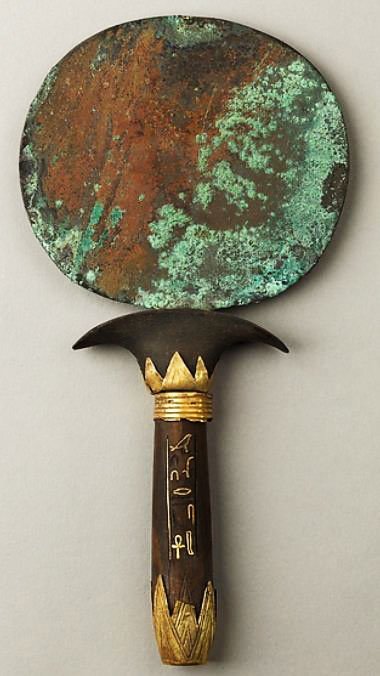 Fig. 5:Another example of a copper mirror. Do you see the shaft made of a papyrus stem like the hieroglyph 𓇅 ?
Fig. 5:Another example of a copper mirror. Do you see the shaft made of a papyrus stem like the hieroglyph 𓇅 ?
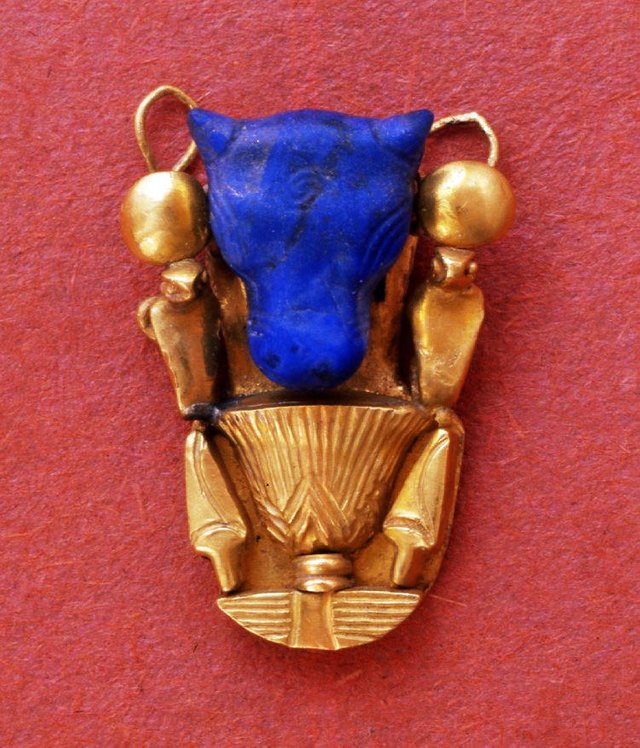 Fig. 6: Jewellery for a necklace, made of gold and lapis-lazuli. Found in Thebes/Luxor, British Museum EA14456,
Fig. 6: Jewellery for a necklace, made of gold and lapis-lazuli. Found in Thebes/Luxor, British Museum EA14456,
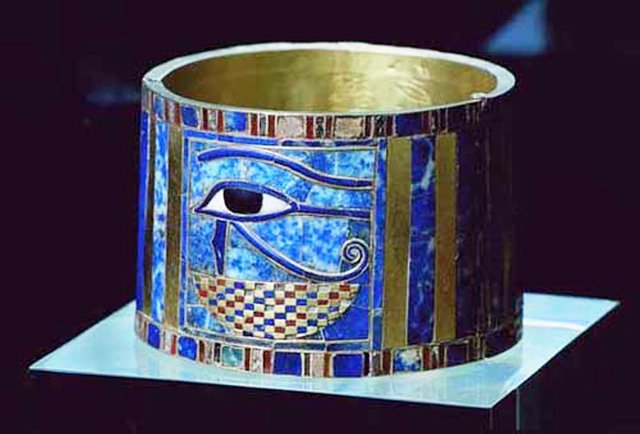 Fig. 7: Bracelet of Pharao Shoshenq, 22nd dynasty with precious inlays of gemstones.
Fig. 7: Bracelet of Pharao Shoshenq, 22nd dynasty with precious inlays of gemstones.
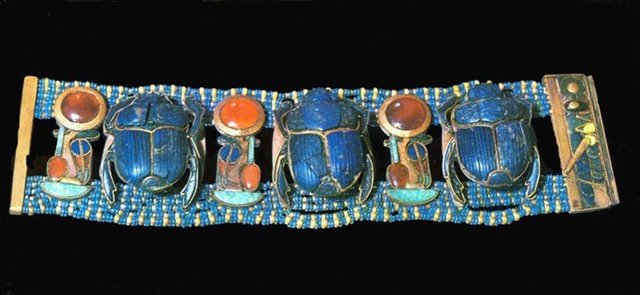 Fig. 8: Bracelet of Tutankhamun with three scarabs, lapis lazuli, carnelian and turquoise.
Fig. 8: Bracelet of Tutankhamun with three scarabs, lapis lazuli, carnelian and turquoise.
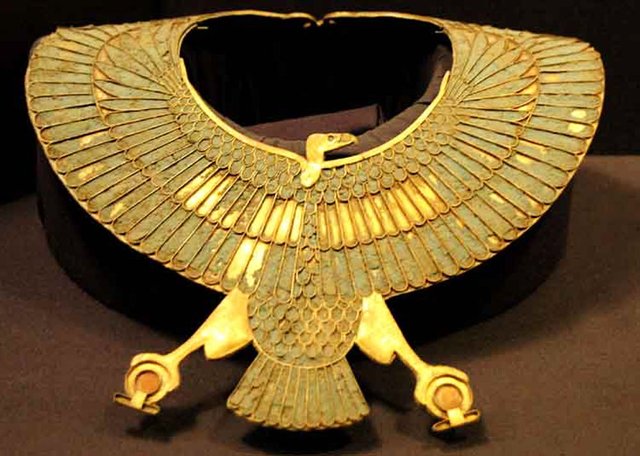 Fig. 9: Wsḫ-collar with vultures, (wsḫ = speak „wsekh“, which means the „wide one“ or „to spread“.
Fig. 9: Wsḫ-collar with vultures, (wsḫ = speak „wsekh“, which means the „wide one“ or „to spread“.
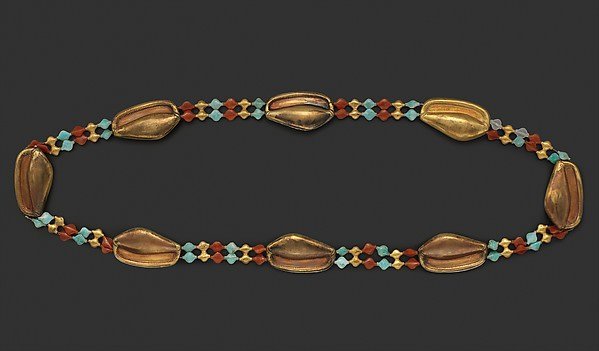 Fig. 10: Cowrie Shell Girdle of Sithathoryunet. The shells were made of gold.
Fig. 10: Cowrie Shell Girdle of Sithathoryunet. The shells were made of gold.
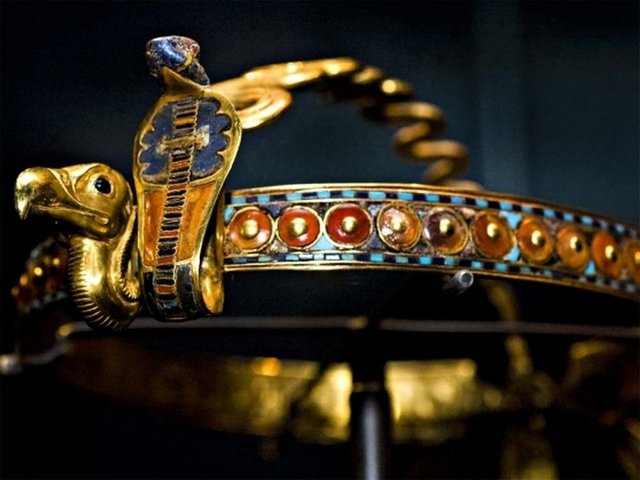 Fig. 11: Diadem or crown of Tutankhamun, with vulture and cobra. On display at the Egyptian Museum Cairo.
Fig. 11: Diadem or crown of Tutankhamun, with vulture and cobra. On display at the Egyptian Museum Cairo.
Sources:
[1] Klasens, Adolf, in: Lexikon der Ägyptologie I, Wiesbaden 1975, Sp. 232–236, s.v. Amulet.
[2] Hornung, Erik / Staehelin, Elisabeth (eds.), Skarabäen und andere Siegelamulette aus Basler Sammlungen, Mainz 1976, 140–141.
[3] Helck, Wolfgang, in: Lexikon der Ägyptologie I, Wiesbaden 1975, Sp. 567, s.v. Augenschminke.
[4] http://www.scinexx.de/wissen-aktuell-11069-2010-01-13.html
[5] smr wꜤ.ty: http://totenbuch.awk.nrw.de/objekt/tm134963
[6] wꜢḏ: https://en.wiktionary.org/wiki/wꜣḏ
[7] ḫsbḏ: Hünemörder, Christian (Hamburg) and Wartke, Ralf-B. (Berlin), “Lapis lazuli”, in: Brill’s New Pauly, Antiquity volumes edited by: Hubert Cancik and, Helmuth Schneider. Consulted online on 29 October 2017 http://dx.doi.org/10.1163/1574-9347_bnp_e631290
Images
Image used in the editorial picture: Pectoral and Necklace of Sithathoryunet with the Name of Senwosret II, on display at the Metropolitan Museum of Art New York Source
Fig. 1: Source
Fig. 2: Source
Fig. 3: Source
Fig. 4: British Museum EA 68868 Source
Fig. 5: Source
Fig. 6: Source
Fig. 7: Source
Fig. 8: Source
Fig. 9: Source
Fig. 10: Source
Fig. 11: Source
Egyptology on Steemit: Transforming Knowledge into Wisdom!
Feel free to ask all the question of what you always wanted to know about Ancient Egypt. That’s my job and my passion. Let’s discuss your thoughts and ideas.

If you liked this article, please follow me on my blog @laylahsophia. I am a german Egyptologist writing about ancient and contemporary Egypt, history of science, philosophy and life.













what beautiful pieces you picked.
The blacksmith's work is truly outstanding and the magical significance of the pieces of jewellery gives it even more fascination. Thank you for this beautiful article, I have read it with pleasure. Have you ever held one of the artifacts or something like that in your hands?
I liked the Bracelet of Tutankhamun best.
At the very beginning in your article, I think the link under the headline "amulets" for "mummification" is missing.
Great that you were inspired by @pawos.
Thank you so much for your nice reply. Yes I held such stuff often in my hands. I remember even one of such wsh-collars with ends made as falcon-heads from fayence ( a special blue ceramic). It was amazing. But can you imagine how difficult it is, to restore such a collar? (The beads are mosten found without the ropes and you pick up the single beads from the tomb! :D )
Unfortunately I cannot give you a picture of this objects since they are not published yet. But here is another, comparable example, with falcon heads from gold:
Source
That is a pretty impressive peace!
I like it a lot. Thanks for showing.
And yes, I cannot imagine to put all the little bits together - but wait! I can:) It reminds me on my origami obsession couple of years ago when I folded tiny paper peaces into a certain shape and then stacked them together so a 3D-form came up. I tried a dragon but failed after I got to impatient within the process because the thing always fell apart. But of course I did not dig in a tomb and had to find the parts first:)
When I had the museum, the ancient Egyptian jewelry was always among my favorites. The piece "Fig 6" is so strong and hypnotizing, that I almost could not scroll down any further...
Of course the text is brilliant as always!
Thank you @reinhard-schmid. The interesting thing with Fig.6 is that Egyptologists assume that this must have been made by a mesopotamian artist living in Egypt, because it was found in Egypt and has an egyptian ‘style’ but a slightly lack of perfection in execution. A very view details have a foreign touch, although the bull, the lotus blossom and the cobra are all symbols of Ancient Egypt.
Guess I like it then, because I have always been very fond of the perfect imperfect. The bent pyramid at Dahshur or the pyramid at Meidum for instance are my favorite ones.
Even with its lack of perfection, that lotus blossom is overwhelming in its beauty...
What a well-sourced and informative post. Thank you for sharing your expertise with us.
I love hearing about how fashions derive from everyday needs - like the eye-liner being antibacterial and preventing blindness. We have so many wrong ideas about these "stereotypes" of ancient cultures.
I'm reminded of the pirates' eye-patches. They weren't to cover injury, but to keep one eye ready for night-vision when boarding the dark lower decks of a ship!
Interesting @winstonalden... for a similar reason we had dim yellow light during the night on the submarine. So the eyes would be adjusted to night vision, when we looked through the periscope.
Thank you so much for your kinds words.
And wow – i didn't know that from the pirates. Very interesting fact!
Mythbusters did a fun episode on the pirates.
You really are sharing some great material on here. I'm so happy to see that your posts are doing so well.
ich bin sprachlos! ein ganz toller post, vielen herzlichen dank. lg
Gern geschehen! War ein schöner Vorschlag von Dir. :)
amazing post - just loved it. the formatting is incredible as well as the writing. I must admit, as a history blogger, i have much to learn from you :) may Allah bless you
Congratulations @laylahsophia, this post is the second most rewarded post (based on pending payouts) in the last 12 hours written by a User account holder (accounts that hold between 0.1 and 1.0 Mega Vests). The total number of posts by User account holders during this period was 2159 and the total pending payments to posts in this category was $2984.58. To see the full list of highest paid posts across all accounts categories, click here.
If you do not wish to receive these messages in future, please reply stop to this comment.
Amulets is best post
Cool
Do you like Amulets? ;)
All the best
Thank you! :)
thank you! loved it :)
It's a pleasure. :)
Congratulations @laylahsophia! You have completed some achievement on Steemit and have been rewarded with new badge(s) :
Click on any badge to view your own Board of Honor on SteemitBoard.
For more information about SteemitBoard, click here
If you no longer want to receive notifications, reply to this comment with the word
STOP